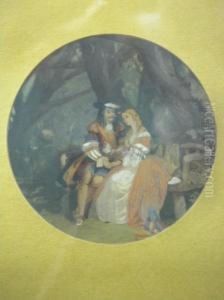Ernest Edward Webster Paintings
Ernest Edward Webster was a Canadian-born artist who achieved recognition for his work as a painter. Born in the year 1885, Webster's early life is not extensively documented, but it is known that he developed an affinity for art at a young age. His artistic journey led him to pursue studies in the field, and he eventually honed his skills to become a proficient painter.
Webster's style was influenced by the prevailing artistic movements of his time, though he is not typically associated with any particular school or style. He worked in various mediums, but he is primarily remembered for his work with oils. The subjects of Webster's paintings were quite diverse, encompassing landscapes, portraits, and still lifes. His approach to these subjects was characterized by a blend of realism and impressionism, capturing the essence of his subjects with a sense of immediacy and vitality.
Throughout his career, Webster exhibited his work in various galleries and was an active member of the artistic community. His paintings garnered appreciation from critics and collectors alike, which helped him to establish a modest but dedicated following. Despite this, Webster did not achieve the same level of fame or lasting impact as some of his contemporaries.
Ernest Edward Webster's life was relatively short, as he passed away in 1933 at the age of 48. The cause of his death is not widely documented, which is reflective of the broader lack of extensive biographical information about the artist. After his death, Webster's work continued to be appreciated by art enthusiasts, particularly within Canada, and his paintings can be found in private collections and occasionally appear at auctions.
Webster's legacy is that of a talented artist who contributed to the cultural fabric of his time, leaving behind a body of work that continues to be appreciated for its beauty and craftsmanship. However, the scarcity of detailed records about his life and the modest scale of his renown mean that he is often overshadowed by his more famous peers in the annals of art history.
